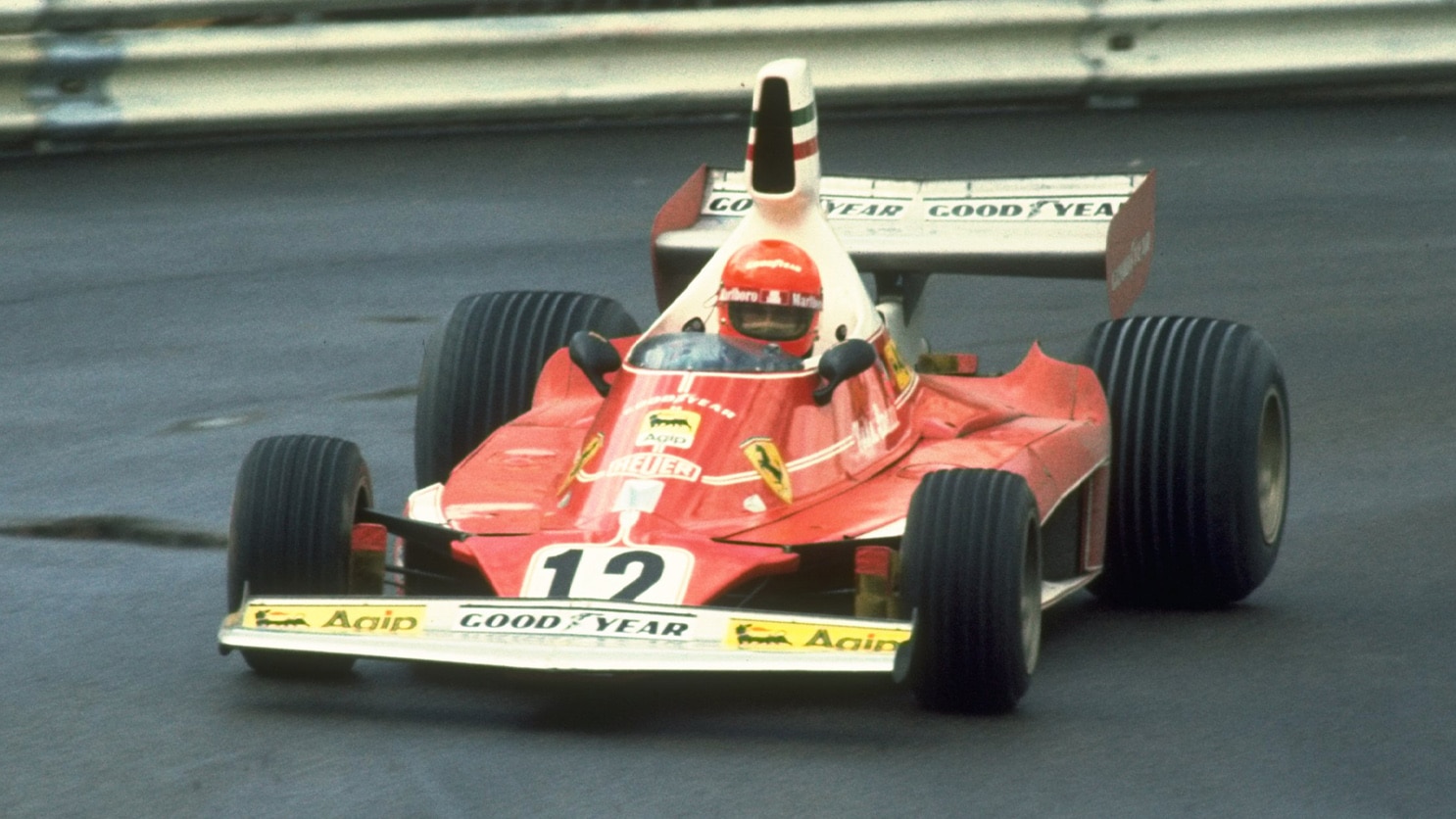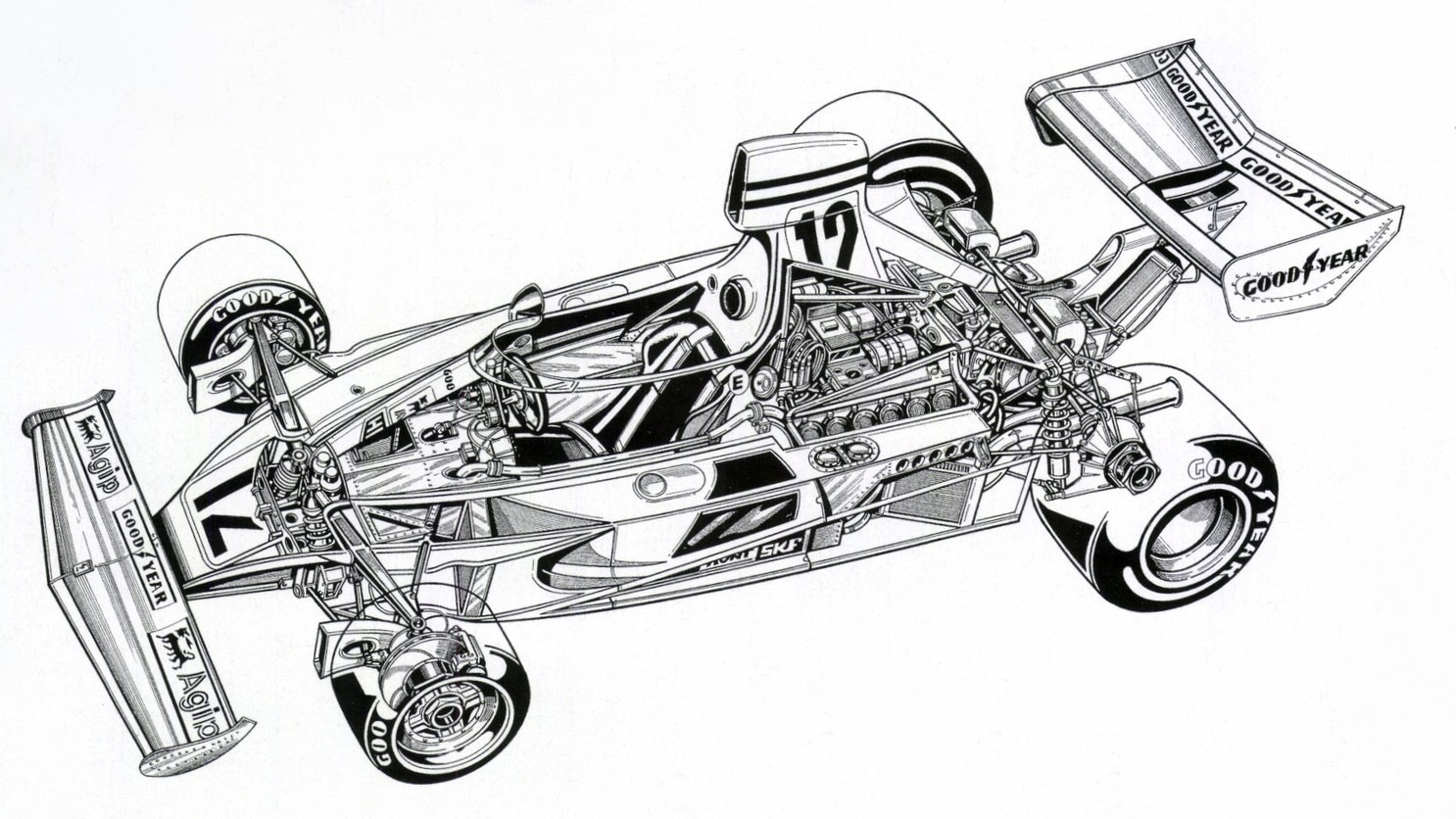Niki Lauda on the 'fantastic' Ferrari 312T
The indefatigable Mauro Forghieri was responsible for every aspect of this title-winner. And yet his was a mass attack. Niki Lauda gives Mark Hughes the lowdown

Niki Lauda and 312T led all but one of 1975 Monaco GP's 75 laps
Tony Duffy/Allsport
Ferrari’s F1 Finest
3rd, 312T
<< Ferrari 641: V12 furore
>> Ferrari 156: Shark strike
Even if he’d never designed anything else in his career, this car would mark out Mauro Forghieri as one of the all-time greats. Not only was the 312T beautiful and stunningly effective, but he did it all himself! Engine, gearbox, chassis — all were the work of this Latin genius. It was a feat common enough in the technologically simpler times of the 1920s, but unique by the 1970s.
That said, it was the culmination of a development line initiated in 1970, when his flat-12 engine made its first appearance. Lowering the CoG had been the core aim of its layout, though this hadn’t translated into a competitive edge often enough to prevent Mauro being banished to special projects for ’73, along with his centred-mass 312B3. An awful year without him persuaded Ferrari to recall him in 74.
Good idea. His exhumed centred-mass concept worked brilliantly in conjunction with the low CoG of the flat-12 to make a car (confusingly still called 312B3) that sat on pole 10 times in 1974 thanks to Niki Lauda (nine) and Clay Regazzoni.
For ’75, Forghieri would centre the masses still further, pushing for a yet lower polar moment of inertia by devising a transverse gearbox. Hence the `T’ of 312T.

“It was a fantastic car,” affirms Lauda. “The ’74 car had given us a strong base, but this one had a better balance. It understeered less, and though it was more twitchy, I soon adjusted my driving style and had the feeling it would do exactly what I wanted it to. It was just better than everybody else’s car: better engine, chassis and gearbox.
“The engine was more powerful but heavier and used more fuel than a Cosworth, so you sometimes had to look after the tyres in the early laps.
“Forghieri was a genius but you needed to control him,” Lauda adds. “I remember at Barcelona in practice, I came in and told him I had understeer. He said, ‘You’re taking the wrong lines’. I asked where, and he said, ‘Round the back of the circuit’ ‘How do you know?’ Because I have a friend out there who tells me.’ ‘Who’s your friend?’ Ah, it’s the lady friend of my doctor.’ I said, ‘Fix my f***ing understeer.’ He did and I put it on pole.”
The evolution, T2, was the same car re-engineered for the dimension regs that outlawed tall airboxes.
“It was an improvement again,” states Lauda. “It was more precise, had a better engine and better brakes. I think I was more dominant in the first part of 1976 than I had been even in ’75. For 1977, though, the car lost its speed because of how Enzo changed our test programme over the winter.
“Basically, he put [new team-mate] Carlos Reutemann in charge of development and had me bedding-in brake pads at Fiorano. Eventually I get pissed off and I’m allowed to go to the last day of a four-day test at Ricard. I have some time on the last day with the tired engine and tired gearbox. Anyway, I go out, the car is understeering, I bring it in and ask for some changes, and straight away I’m 0.5sec quicker than Reutemann’s best. I told the Old Man, ‘If you keep Reutemann in charge of testing you’ll be in a mess.’ He agreed and everything went back to normal.
“I think in early 1976 we enjoyed a similar situation to what they have now. Maybe we weren’t so much quicker than the opposition as the F2002 has been this year, but you only need to be quicker.”
Ferrari 312T statistics, 1975-76
• Grands prix entered 15
• Wins 9
• Additional podiums 6
• Pole positions 10
• Fastest laps 8
• Laps led 556

